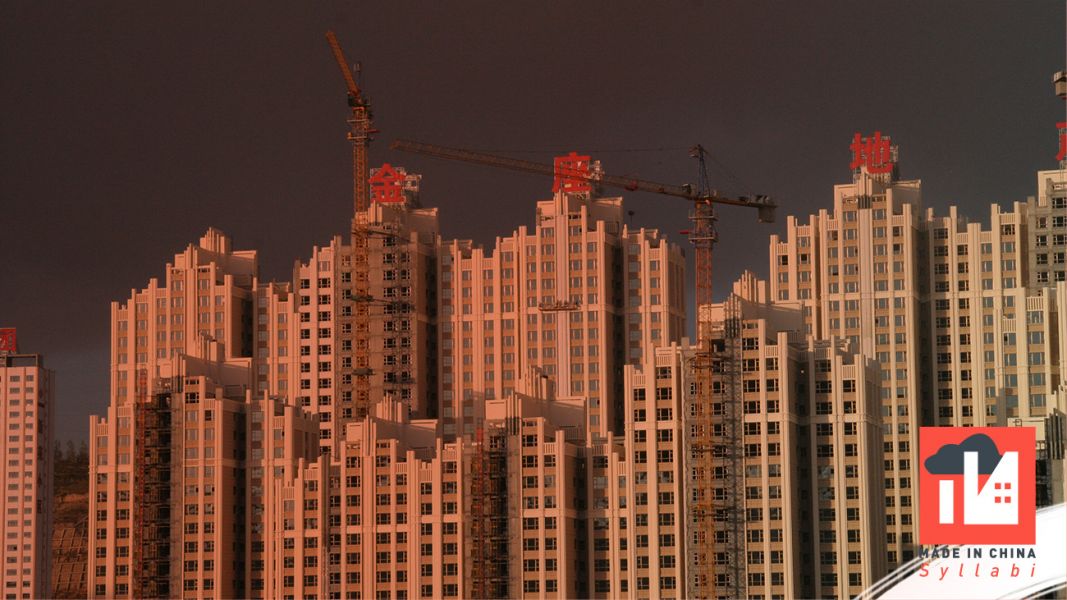
Syllabus: Chinese Development
This syllabus examines the dynamics of socioeconomic development in contemporary China in five modules. The first module explores the role of infrastructure and industry in Chinese development, starting by tracing the development of infrastructural and industrial concepts, before moving on to look at the varied history of mining and China’s ‘paradigmatic infrastructural state’. The second module covers urbanisation and migration, paying particular attention to the regimes of migrant work and the lived experience of migrant workers. The third digs into issues of poverty and underdevelopment, beginning with pieces that outline the core concepts underpinning the binaries that shape developmental thought in contemporary China, followed by analyses of discourses of poverty and the outcomes of government development interventions. The fourth module considers the impact that development has had on the environment, looking at the way in which mastery over nature has been framed in recent Chinese history and moving on to the various attempts the Chinese government has made to mitigate serious environmental problems emerging from its extractive development model. Finally, the fifth module delves into the complex issue of Chinese development overseas—particularly in the ‘Third World’—examining the diverse manifestations of Chinese capitalist development in countries of the Global South, as well as local responses.
Course Modules:
- Infrastructure and Industry
- Urbanisation and Migration
- Poverty and Underdevelopment
- Environment
- Chinese Development Overseas
Module 1: Infrastructure and Industry
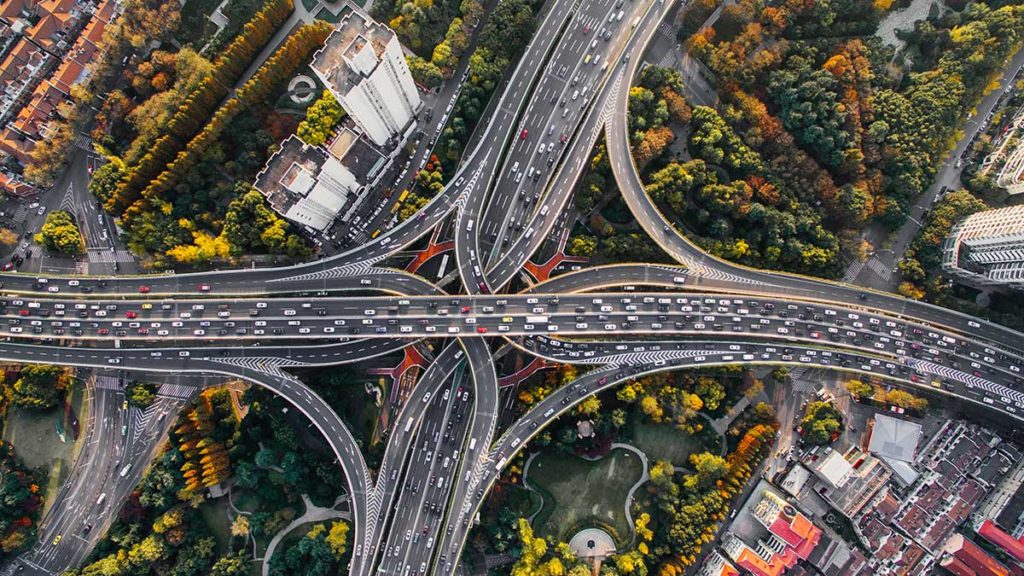
- Luigi Tomba. 2019. ‘Large and Communitarian.’ In Afterlives of Chinese Communism, edited by Christian Sorace, Ivan Franceschini, and Nicholas Loubere, 111–14. Canberra, London, and New York: ANU Press and Verso Books.
Mao Zedong’s coining of the slogan ‘large and communitarian’ (yida ergong) accompanied the launch of the people’s communes (renmin gongshe) in 1958. In the language of Maoism, collectivism had come to include a territorial aspiration, and the success of the communes depended on their size. Although the ideology of ‘large and communitarian’ went down in history as a ‘leftist mistake’, it continues to signify one fundamental difference between the two main forms of socialist organisation: the efficiency-seeking Soviet version, and the territorial concerns of the Chinese version that aimed at seizing control of the collective strengths of a largely rural society.
- Jane Hayward. 2019. ‘Primitive Accumulation.’ In Afterlives of Chinese Communism, edited by Christian Sorace, Ivan Franceschini, and Nicholas Loubere, 201–06. Canberra, London, and New York: ANU Press and Verso Books.
Primitive accumulation (yuanshi jilei) is the transfer, often by violent means, of formerly common resources into the hands of a privileged few so that they can be utilised for the creation of private profit, thus depriving everyone else of an autonomous means of existence. Chronologically, primitive accumulation is precapitalist—it is the process by which the exploitative class relations inherent to capitalism come into being. Marx called it the ‘original sin’ of the capitalist mode of production.
- Craig A. Smith. 2017. ‘Industrial Landscapes of Socialist Realism.’ Made in China Journal, vol. 2, no. 4: 61–65.
Although industrial landscapes today appear as one of the most alien of art forms, they were once fundamental as backgrounds of socialist realist paintings. This essay examines the legacies of two masters of the genre in China and North Korea—Song Wenzhi (1919–1999) and Chōng Yōngman (1938–1999)—and demonstrates how different revolutionary histories have led to a divergence in legacy and achievement.
- Maris Boyd Gillette. 2017. ‘China’s Industrial Heritage without History.’ Made in China Journal, vol. 2, no. 2: 22–25.
Twenty years after the Chinese authorities decided to radically reform the country’s state industry, where does public memory of the nation’s socialist industrialisation reside? What aspects of the socialist path to modernity do officials or private citizens monumentalise, if any at all? To what extent does China’s contemporary heritage movement encompass its socialist industrial history? This essay offers an initial attempt to answer such questions.
- Edwin Schmitt. 2017. ‘Burning Coal in Tangshan: Energy Resources as Commons.’ Made in China Journal, vol. 2, no. 2: 42–45.
The extraction and use of energy resources to drive modernisation has been one of the key concerns of the Chinese Communist Party. By tracing the history of coal mining in China, this essay argues that the physical characteristics of coal as a common pool resource have shaped the ways in which coal has been harvested and used, as well as the political and institutional structures that have developed around its governance.
- Judith Audin. 2020. ‘The Coal Transition in Datong: An Ethnographic Perspective.’ Made in China Journal, vol. 5, no. 1: 34–43.
The city of Datong, Shanxi province, has long been known as the ‘coal capital’ of China. Through an ethnographic approach based on long-term observation and in-depth interviews conducted over several years, this essay examines how the restructuring of the local coal industry in the reform era has impacted the living and working conditions of the miners in the area.
- Ivan Franceschini. 2017. ‘Slaving Away: The “Black Brick Kilns Scandal” Ten Years On.’ Made in China Journal, vol. 2, no. 2: 16–21.
In the spring and summer of 2007, bands of aggrieved parents roamed the Chinese countryside looking for their missing children, whom they learned had been kidnapped and sold as slaves to illegal kilns. Thanks to the involvement of Chinese media and civil society, the so-called ‘black brick kilns incident’ became one of the most remarkable stories of popular mobilisation and resistance in contemporary China. Now that ten years have passed, are there any lessons that we can draw from this moment in history?
- Tim Oakes. 2019. ‘China Made: Infrastructural Thinking in a Chinese Register.’ Made in China Journal, vol. 4, no. 2: 66–71.
The brief essays in this collection emerged out of a 2018 workshop hosted by the China Made project—a collaboration between the University of Colorado’s Center for Asian Studies and the Hong Kong Institute for Humanities and Social Sciences funded by the Henry Luce Foundation. We sought to explore what we might learn when we look more closely at China as the world’s ‘paradigmatic infrastructure state’.
- Jonathan Bach. 2019. ‘What Kind of Model? Thinking about the Special Economic Zone and the Socialisty City.’ Made in China Journal, vol. 4, no. 2: 72–77.
This essay asks whether the special economic zone could, counterintuitively perhaps, reflect the morphology of the socialist city. By locating the roots of today’s special economic zones in socialist urbanism, this essay both complements and questions the standard genealogy of the zone in capitalism and our imagination of global infrastructural space.
- Tong Lam. 2019. ‘Futures and Ruins: The Politics, Aesthetics, and Temporality of Infrastructure.’ Made in China Journal, vol. 4, no. 2: 78–83.
In both the socialist and post-socialist eras, many of China’s infrastructure projects took place in the so-called special zones or areas that were designated respectively for war preparation as well as economic and technological development. These large-scale infrastructure projects have made promises about the future, but have also left behind a trail of ruins and foreclosed possibilities. Amid these utopian and dystopian landscapes are opportunities to reflect on China’s relentless development and our growing planetary crisis.
- Hallam Stevens. 2019. ‘Digital Infrastructure in the Chinese Register.’ Made in China Journal, vol. 4, no. 2: 84–89.
Science and technology studies now include a significant literature that examines the practices and meanings of ‘digital infrastructure’. This literature can help us to understand some of the importantly different aspects of digital infrastructure in China. In particular, it illuminates ways in which physical and digital infrastructures in China are tightly interwoven, and highlights the importance of examining the relationships between digital infrastructure, human bodies, and labour. These entanglements suggest that digital infrastructure in China is playing an increasingly important role in shaping the relationships between citizens, corporations, and the state.
- Dorothy Tang. 2019. ‘Between Poetics and Utility: Landscape Infrastructure in China.’ Made in China Journal, vol. 4, no. 2: 90–97.
The conceptual history of landscape is mired between the dualities of poetics and utility—rooted in its origins of landscape art and the current preoccupation with alternative sustainable infrastructures. This essay unpacks the ‘mutuality’ of nature as a traditional cultural practice and as innovative technology in contemporary Chinese landscape architecture. The ‘Sponge City’ practices of promoting green infrastructure exemplify the coproduction of urban nature in scientific and cultural terms, and suggest an alternative analytical framework for urban infrastructure research in China.
- Alessandro Rippa. 2019. ‘Infrastructure of Desire: Rubble, Development, and Salvage Capitalism in Rural China.’ Made in China Journal, vol. 4, no. 2: 103–07.
In Tengchong, at the China-Myanmar border, a new development project has led to the destruction of large parts of the old town. As construction of the new, high-rise apartments has yet to begin, groups of men and women dig through the rubble, looking for precious jade. This essay moves from this unique event to reflect on the ‘desire’ that lies at the core of China’s infrastructural development, which produced Tengchong’s rubble in the first place.
- Andrew Grant. 2019. ‘Cosmic Infrastructure.’ Made in China Journal, vol. 4, no. 2: 108–13.
Urban redevelopment in contemporary China has created new material infrastructures that spatialise developmental temporalities and accelerate the destruction of older urban forms. In Xining city, the infrastructure of the contemporary city uneasily coexists with the cosmic infrastructures of Chinese eternal harmony and Tibetan Buddhist cyclical rebirth. In this essay, Andrew Grant explores how these three infrastructures ground different social orders and how thinking through cosmic infrastructures can reveal temporalities that urban redevelopment obscures.
- Christian Sorace. 2016. ‘Paradise Under Construction.’ Made in China Journal, vol. 1, no. 3: 39–43.
Zhao Liang’s recent film Behemoth is a cinematic meditation on the Anthropocene. Composed from documentary footage of natural and human life in their devastated forms, the film offers a dystopian view of our present reality based on a script written by Zhao Liang that is loosely adapted from Dante’s Divine Comedy. The narrative of Behemoth follows what Zhao Liang describes as a ‘supply chain’ of urban construction. The film opens with a long-shot of an open-pit coal mine in Inner Mongolia, explosions are heard in the distance, coal ash rains from the sky into the frame, accompanied by the rasping of traditional Mongolian throat-singing. The camera descends into coal mines, swelters in the heat of iron smelting furnaces, dispassionately gazes on coal miners in their dormitories and hospital beds, and finally sojourns in the utopian ‘ghost city of Ordos’ where the film ends.
Module 2: Urbanisation and Migration
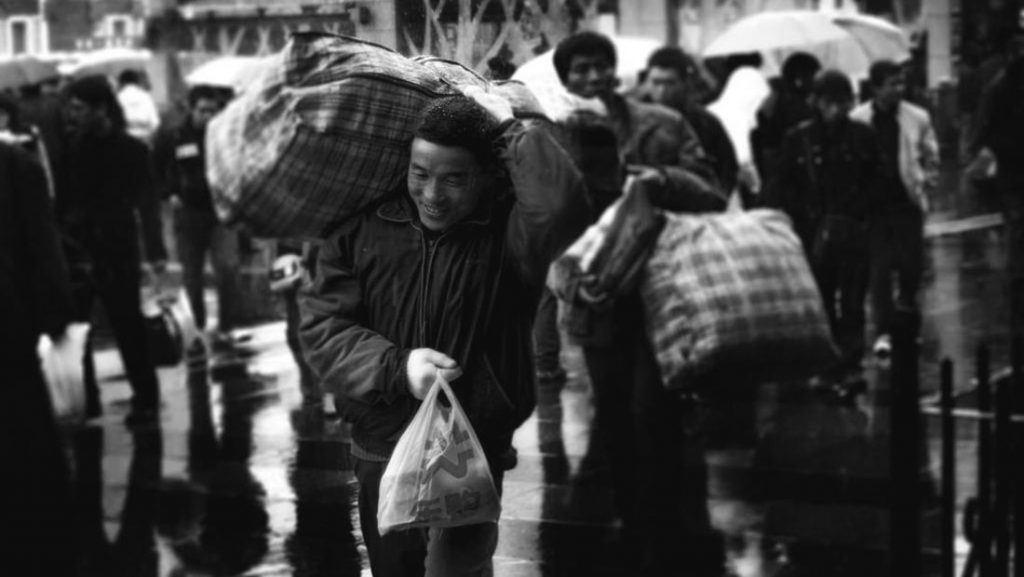
- Thomas Sætre Jakobsen. 2019. ‘Beyond Proletarianisation: The Everyday Politics of Chinese Migrant Labour.’ Made in China Journal, vol. 3, no. 2: 52–57.
In China as elsewhere, labour studies typically focus on visibility, organisation, and collective endeavours taken on by workers and their organisations to improve the collective situation of the labouring class as a whole. The privileged site for these overt manifestations of labour movement politics remains focussed on urban areas in general, and on manufacturing work in particular. This essay argues that this view is reductive, in that it only takes migrant labourers seriously as political actors once they enter the urban workplace. This risks neglecting the reality of hundreds of millions of workers who live between the farmlands in the countryside and the workplaces of the city.
- Kaxton Siu. 2017. ‘From Dormitory System to Conciliatory Despotism: Changing Labour Regimes in Chinese Factories.’ Made in China Journal, vol. 2, no. 4: 36–39.
China’s manufacturing model has been built on the exploitation of migrant workers under a despotic labour regime. But is that still the case? Based on extensive research in the Chinese garment sector, this essay argues that while draconian controls persist up to this day, the situation of China’s migrants has undergone dramatic transformations that encompass not only changes in the workers’ demographic profile and everyday life practices, but also new social, technical, and gendered divisions of labour inside factories.
- Beatriz Carrillo Garcia. 2016. ‘Migrant Labour and the Sustainability of China’s Welfare System.’ Made in China Journal, vol. 1, no. 4: 15–18.
Social welfare in China has emerged as a major cause of migrant workers’ discontent. Reforms of the social welfare system in China since 2002 have expanded coverage and protection of vulnerable populations, but structural problems remain for migrant workers to access and receive the full benefits of the social safety net. How has the social welfare system evolved, and what are the challenges facing migrant workers? How can the system be made more sustainable?
- Roberta Zavoretti. 2017. ‘Making Class and Place in Contemporary China.’ Made in China Journal, vol. 2, no. 1: 16–19.
Rural-to-urban migrants in China are often depicted as being poor, uncivilised, and having a lower level of ‘human quality’ than those with urban household registration. Policy-makers carefully strategise in order to produce rural-to-urban migrants as a homogeneous category. However, the use of this term obscures more than it illuminates, as it homogenises complex social realities.
- Ma Tian. 2017. ‘Migrants, Mass Arrest, and Resistance in Contemporary China.’ Made in China Journal, vol. 2, no. 4: 12–14.
In today’s China, migrant workers are commonly perceived as criminals. This essay examines how this bias is reflected in mechanisms of crime control, as well as in the judicial and correctional systems. It also looks into the strategies adopted by migrants to cope with this kind of discrimination by the law enforcement bodies.
- Eric Florence. 2018. ‘Rural Migrant Workers in Independent Films: Representations of Everyday Agency.’ Made in China Journal, vol. 3, no. 1: 96–103.
The recent wave of evictions of tens of thousands of rural migrants in Beijing has served as a harsh reminder of the subaltern condition of many of these people in today’s China. This essay examines how rural migrant workers have been represented in Chinese independent documentary films. It points to the importance of conceptually linking the political economy, sociology, and cultural politics of labour in order to apprehend the subject-making processes of migrant workers in today’s China.
- Jonathan Kinkel. 2017. ‘Datong, Forever in Limbo.’ Made in China Journal, vol. 2, no. 4: 66–69.
The 2015 documentary The Chinese Mayor by Zhou Hao documents the story of Datong, Shanxi province, as its leaders embark on an ambitious plan to transform the city into a tourist destination. Still, although the filmmakers devote sustained attention to the relocated residents and their demolished homes, the film is no exposé: it is mostly intended to educate an international audience on the internal workings of the Chinese policy-making process.
- Carlo Inverardi-Ferri. 2017. ‘Commons and the Right to the City in Contemporary China.’ Made in China Journal, vol. 2, no. 2: 38–41.
This essay outlines the development of Dongxiaokou, an urban village on the outskirts of Beijing. Until urban redevelopment projects accelerated its demolition in recent years, this informal settlement was home to a massive population of migrant workers, who had made this place their base for entering the capital’s labour market. The story of Dongxiaokou provides interesting insights into the process of commodification of land in contemporary China. In particular, it highlights the tension between land used as a common resource by migrants, and land utilised as a way to produce economic profits for real estate development.
- Kevin Lin. 2018. ‘Eviction and the Right to the City.’ Made in China Journal, vol. 3, no. 1: 15–17; Qiaochu Li, Song Jiani, and Shuchi Zhang. 2018. ‘Beijing Evictions: A Winter’s Tale.’ Made in China Journal, vol. 3, no. 1: 28–33.
In response to a deadly fire in a Beijing neighbourhood inhabited mostly by migrant workers, in November 2017 the authorities of the Chinese capital launched an unprecedented wave of evictions. Without any notice, migrants who often had spent years in the capital were told to leave their habitations and relocate elsewhere in the midst of the freezing north-China winter. These two essays look into how Chinese civil society responded to the crisis and examine the broader implication of the evictions for the right to the city of Chinese migrant workers.
Module 3: Poverty and Underdevelopment
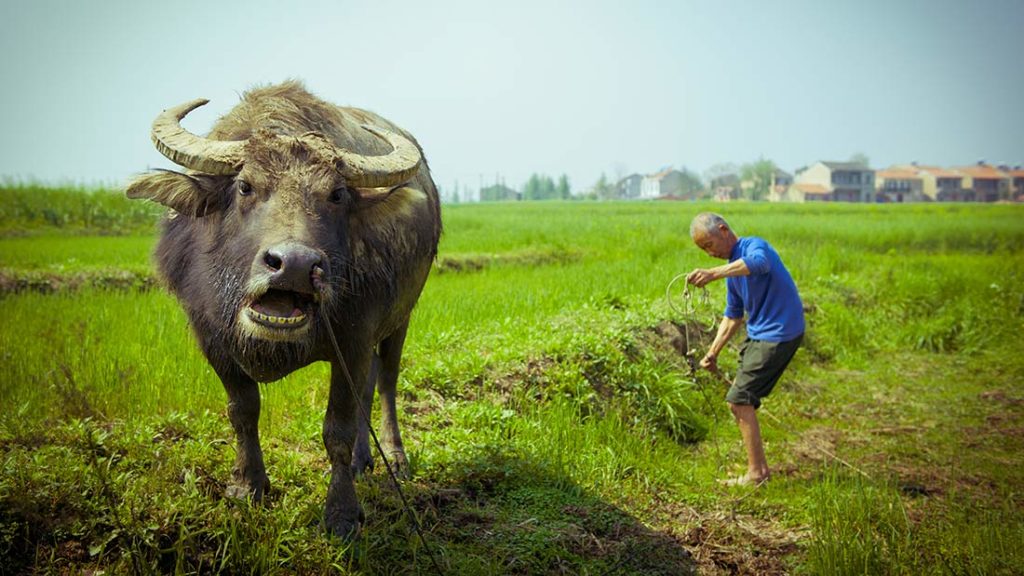
- Alexander F. Day. 2019. ‘Peasant.’ In Afterlives of Chinese Communism, edited by Christian Sorace, Ivan Franceschini, and Nicholas Loubere, 175–80. Canberra, London, and New York: ANU Press and Verso Books.
‘Peasant’ (nongmin) is a modern historical and political category in China, and Mao Zedong had more to do with its construction than any other individual. At the turn of last century, nongmin emerged as a translation of the English term peasant. While the category usually had negative connotations—such as backwardness, superstition, and ignorance—some took nongmin to be a positive category. These dichotomous images of the Chinese peasant, however, were brought together into a new dynamic unity within the Maoist theory and practice of rural revolution, a result that was achieved by paying particular attention to the question of class differentiation.
- Ou Ning. 2019. ‘Utopia.’ In Afterlives of Chinese Communism, edited by Christian Sorace, Ivan Franceschini, and Nicholas Loubere, 309–14. Canberra, London, and New York: ANU Press and Verso Books.
Only when danger is imminent and everything is on the verge of collapse do people begin to urgently ponder and search for an alternative plan. Utopia calls to mind a cheerful earth that is elsewhere, a negation of reality. If people find this prospect dull, it is perhaps because their lives are calm and orderly, and it quite simply does not speak to their interests. Or, because it negates reality, perhaps it touches the red line of discourse before which people suppress their voices to protect themselves. In China, discussing utopia requires bravery; putting it into practice requires power.
- Craig A. Smith. 2019. ‘Datong and Xiaokang.’ In Afterlives of Chinese Communism, edited by Christian Sorace, Ivan Franceschini, and Nicholas Loubere, 63–66. Canberra, London, and New York: ANU Press and Verso Books.
Xiaokang and its close relative datong are distinctly Chinese terms that successive generations of intellectuals have adapted from classical Confucian discourse to fit Marxist and, subsequently, Maoist and post-Maoist teleologies. This adoption plays a role in Party-state legitimacy by forging a continuity between past Chinese traditions and a future Chinese utopia.
- Brian DeMare. 2018. ‘Land Wars: A Conversation with Brian DeMare.’ Made in China Journal, vol. 3, no. 4: 80–84.
The Maoist land reform campaigns were an integral element in the Chinese Communist Party’s rise and subsequent ability to maintain power. In Land Wars (Stanford University Press 2019), Brian DeMare weaves together historical and narrative accounts, providing a detailed picture of how the land reforms shaped the lives of those involved, as well as communist rule in China.
- Andrew Kipnis. 2017. ‘From Village to City: An Interview with Andrew Kipnis.’ Made in China Journal, vol. 2, no. 1: 54–55.
The book, From Village to City: Social Transformation in Chinese County Seat (University of California Press, 2016), paints an extraordinary portrait of Zouping, a county in Shandong province, challenging our current understandings of modernity and putting forward a new theory of urbanisation
- Jasmine Wang. 2019. ‘Poor Attitudes towards the Poor: Conceptions of Poverty among the Rich and Powerful in China.’ Made in China Journal, vol. 4, no. 2: 60–63.
Besides being increasingly unequal, Chinese society is saturated with status-consciousness. In such a context, what kinds of attitudes do people situated on the top rung of the social ladder hold towards people on the bottom rung? Through a series of interviews with individuals belonging to the top 1 percent of the Chinese population in financial terms, this essay considers how rich people around the country view the poorer segments of society and perceive their responsibility towards them.
- Robert Walker and Yang Lichao. 2019. ‘Anti-poverty Policies and Discourses of Blame in China.’ Made in China Journal, vol. 4, no. 1: 46–49.
Under Xi Jinping, the Chinese authorities have promised to eradicate rural poverty in the country by 2020. Since it was first announced, this goal has entered the popular imagination, becoming a major engine of policy innovation. A new report prepared by a special group within the Standing Committee of the National People’s Congress on the occasion of its 2019 session offers an assessment of progress in poverty reduction, providing up-to-date targets and candidly discussing contradictions within the poverty alleviation strategy.
- Dorothy Solinger. 2017. ‘The Precarity of Layoffs and State Compensation: The Minimum Livelihood Guarantee.’ Made in China Journal, vol. 3, no. 1: 40–43.
When discussing the outcomes of China’s economic development, the poverty that can still be found in Chinese cities is seldom mentioned. While the Party-state is indeed making a token effort to sustain the victims of this destitution, these people and their offspring will never be able to escape this manufactured poverty. This essay looks at the policy process that led to this outcome and at the prospects for poverty alleviation in Chinese urban areas.
- Tamara Jacka. 2018. ‘Inside Work: The Hidden Exploitation of Rural Women in Modern China.’ Made in China Journal, vol. 3, no. 4: 42–47.
Conventional wisdom holds that China’s modern development has been powered by urban industry and commerce. The agrarian family economy, combining home handcraft production and domestic work with small-scale agriculture, is commonly seen as a remnant of the past. This essay proposes a different understanding of the development trajectory of modern China as being underpinned and enabled by exploitation in the agrarian family economy, especially of rural women.
- Jane Hayward. 2018. ‘China’s Land Reforms and the Logic of Capital Accumulation.’ Made in China Journal, vol. 3, no. 4: 48–51.
This essay briefly examines how rural land reforms in China are being driven by the imperative of capital accumulation. It looks at how policies of agricultural land transfer, new rural community construction, and the urban-rural land linking system, are all too often driven by the urban real estate industry in league with local governments and agribusinesses, rather than by villagers themselves.
- Sarah Rogers. 2018. ‘Manufactured Modernity: Dwelling, Labour, and Enclosure in China’s Poverty Resettlements.’ Made in China Journal, vol. 3, no. 4: 58–61.
Between 2016 and 2020, the Chinese authorities will have resettled nearly 10 million people throughout China’s inland provinces with the aim of eliminating absolute poverty in rural areas. Looking at the case of Southern Shaanxi, this essay reflects on specific poverty resettlement projects, and Chinese resettlement practice more broadly, to try to make sense of the intent and impact of such large-scale interventions on both the lives of individuals and the transformation of the Chinese countryside as a whole.
- Nicholas Loubere. 2016. ‘Laying Off Responsibility: Microcredit, Entrepreneurship, and China’s Industrial Retrenchment.’ Made in China Journal, vol. 1, no. 2: 20–23.
In early 2016, the Chinese government announced that state-owned steel and coal companies would be restructured, resulting in the loss of 1.8 to 6 million jobs. In April, seven government agencies jointly release a set of guidelines outlining a strategy for mitigating the fallout from this latest round of mass layoffs. One of the key elements of this strategy is the encouragement of entrepreneurial activity through tax relief and subsidised ‘microcredit’ for laid-off workers. Does the promotion of entrepreneurship and self-employment have the potential to meet the needs of the newly unemployed? Or is this strategy actually part of a wider ideological project aimed at individualising responsibility for social welfare and fragmenting labour?
- Marina Svensson. 2018. ‘Rural Transformations and Urbanisation: Impressions from the Ningbo International Photography Week.’ Made in China Journal, vol. 3, no. 4: 68–71.
From late October to early December 2018 the Third Ningbo International Photography Week was held at Dongqian Lake in Zhejiang Province. Under the theme Village Images, the exhibition documented rural transformations and processes of urbanisation from a variety of perspectives.
- Daniele Dainelli. 2018. ‘Domestic Archaeology.’ Made in China Journal, vol. 3, no. 4: 72–79.
The Domestic Archaeology Project is the outcome of seven years of work, from 2009 to 2016. During this period, Daniele Dainelli undertook dozens of trips to the countryside—exploring the lives of those living in the rural hinterlands of the coast, inland areas, and the western provinces. In our contemporary era, characterised as it is by change and transformation, rural areas in China are being progressively abandoned. This change is radical, relentless, and epic. It somehow parallels the path of humanity in modern history—a path that has seen the gradual abandonment of the rural way of life in favour of an urbanisation often imposed from above.
Module 4: Environment
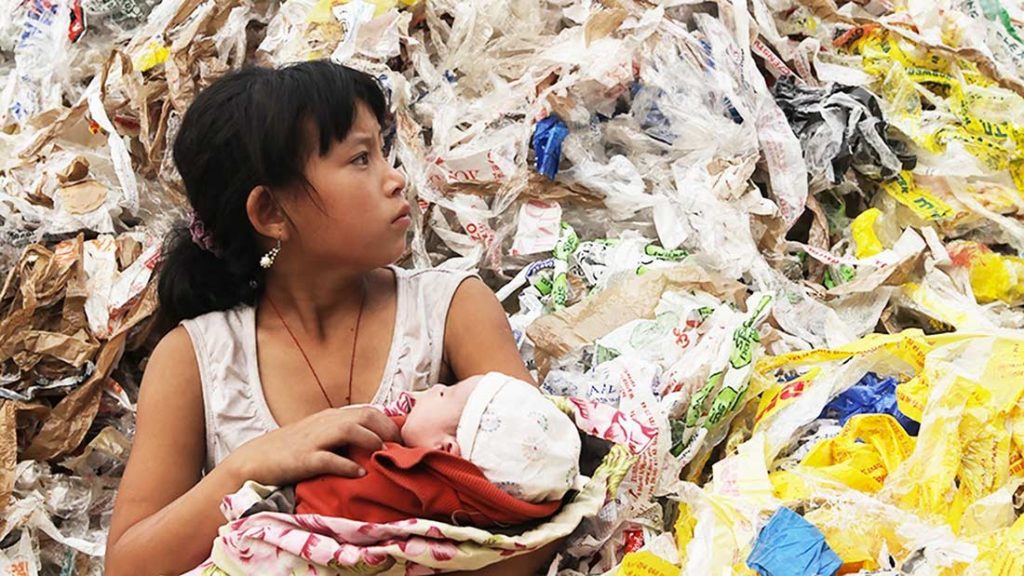
- Anna Lora-Wainwright. 2019. ‘Removing Mountains and Draining Seas.’ In Afterlives of Chinese Communism, edited by Christian Sorace, Ivan Franceschini, and Nicholas Loubere, 221–24. Canberra, London, and New York: ANU Press and Verso Books.
The expression ‘removing mountains and draining seas’ (yi shan dao hai) first appeared in the sixteenth-century classic novel Journey to the West to refer to the attitude one should adopt in the face of difficulties. Taken a little more literally, it encapsulates rather well the promethean attitude to nature—conceiving of the environment as a resource to fulfil human needs and interests—during the Mao years. It embodies a celebration of the capacity of humanity to overcome natural obstacles and mould the environment to its benefit.
- Yvan Schulz. 2018. ‘Plastic China: Beyond Waste Imports.’ Made in China Journal, vol. 3, no. 4: 96–101.
In the last two years, the issue of waste exports to China has attracted considerable media and public attention. As a result, awareness of the social and environmental impact of the global trade in recyclables has increased substantially, both within and outside of China. Among contributing factors was Plastic China (2016), a documentary directed by Wang Jiuliang. Since its release, the film has become indissociable from the issue of waste exports, and it gained even more prominence after July 2017, when the Chinese government announced a wide-ranging ban on ‘foreign waste’ (yang laji). However, the film’s relevance extends far beyond the issue of waste management. This essay argues that Plastic China should be considered as a rich social commentary and critique, and interpreted in the light of China’s tradition of independent documentary-making in the reform era.
- Anna Lora-Wainwright. 2018. ‘Resigned Activism: A Conversation with Anna Lora-Wainwright.’ Made in China Journal, vol. 3, no. 3: 100–105.
In today’s China, rapid development and urbanisation has resulted in widespread environmental pollution and degradation. In many parts of the country contamination has become a mundane but oppressive part of daily existence. In Resigned Activism (MIT Press 2017), Anna Lora-Wainwright examines how Chinese people living with environmental degradation attempt to improve their situations in ways that are infused with deep resignation and feelings of powerlessness.
- Amy Zhang. 2019. ‘Invisible Labouring Bodies: Waste Work as Infrastructure in China.’ Made in China Journal, vol. 4, no. 2: 98–102; Adam Liebman and Goeun Lee. 2020. ‘Garbage as Value and Sorting as Labour in China’s New Waste Policy.’ Made in China Journal, vol. 5, no. 1: 56–63.
These two essays look into the latest development in China’s waste management policies from the lens of the labour involved. Zhang’s article examines the failure of China’s attempts to implement citizen recycling programmes and argues that, in the absence of citizen participation, recycling, and waste collection are nevertheless achieved by workers who mobilise their labour, constituting a mundane, low-tech infrastructure to recuperate and circulate waste. Liebman and Lee focus on the controversial new garbage sorting system adopted in 2019 in Shanghai. By considering often-unrecognised forms of labour and the interstices of value that many waste objects occupy, they examine how waste work has become a site of heightened contestation with multiple types of value in play.
- John Aloysius Zinda. 2018. ‘Managing the Anthropocene: The Labour of Environmental Regeneration.’ Made in China Journal, vol. 3, no. 4: 62–67.
Since 2010, China has seen new carbon markets, closures of polluting factories, and expanded efforts to regenerate degraded landscapes and protect wildlife in intact ecosystems. All of this entails a great deal of labour. Yet when reporters or researchers discuss China’s environmental management efforts, they may chronicle policies, regulatory actions, infrastructures, carbon figures, or impacts on humans and animals, but they seldom say much about the labour of environmental protection or the people who perform it. This is because scholars and journalists alike tend to place environment and labour in separate boxes.
- Edwin Schmitt and Daniel Fuchs. 2017. ‘How China’s Environmental Crackdown Is Affecting Business Owners and Workers: The Case of Chengdu.’ Made in China Journal, vol. 2, no. 4: 44–49.
The recent Party Congress has seen an outpouring of support for strengthening environmental protections. This has come amid an intensified environmental crackdown that has seen surprise inspections of mostly smaller and older factories across the country. While these activities have received some attention in the Chinese media, at present very few reports can be found in English. To fill this gap, this essay explores the implications of the campaign for workers and business in Chengdu.
- Andrea Enrico Pia. 2017. ‘A Water Commons in China?’ Made in China Journal, vol. 2, no. 2: 30–33.
The debate over China’s environmental issues has given scant consideration to already existing popular alternatives to the top-down, growth-compatible governance of the country’s natural resources. Forty years of Party-sanctified insistence on pursuing relentless economic development has seemingly suppressed alternative discourses in natural resource management. However, if we take a closer look, we will find that at the grassroots there is no lack of alternatives. For instance, in contemporary rural China there are places where water is being managed as a commons.
- Timothy McLellan. 2017. ‘Amateurism and Our Common Concern for Biodiversity.’ Made in China Journal, vol. 2, no. 2: 34–37.
Treating the environment as a common resource often implies not only local, but also supralocal, even global, collectives of concerned stakeholders. While engaging with local actors, these stakeholders frequently insist on the need for a ‘professional’ approach. Examining an international project aimed at introducing biologically diverse agroforestry in a county in southwest China, this essay describes a more ‘amateur’ approach adopted by one international organisation. It argues that this amateurism demonstrates that, even within global professional organisations, there is an appetite for a new, more spontaneous, approach that values local knowledge and practices.
- Brendan A. Galipeau. 2017. ‘Protecting Sacred Commons.’ Made in China Journal, vol. 2, no. 2: 46–49.
This essay explores a particular kind of local viticulture in Tibetan communities in northwest Yunnan province. While mainstream wineries emphasise modernity at any cost without much concern for the environment, the rural Tibetan grape growers examined in this article pursue an ecologically-friendly agenda meant to protect ‘common’ sacred landscapes. Reasons for this choice include observations of chemical degradation of the land, Buddhist ethics, and new conceptions of how ethnic representation can be exemplified by more ecologically-friendly forms of commodity production.
Module 5: Chinese Development Overseas

- Teng Wei. 2019. ‘Third World.’ In Afterlives of Chinese Communism, edited by Christian Sorace, Ivan Franceschini, and Nicholas Loubere, 281–86. Canberra, London, and New York: ANU Press and Verso Books.
The revolutionary origins of the term ‘third world’ (di san shijie) in China are now buried under a litany of developmental discourse. After all, as Deng Xiaoping famously said: ‘Development is the only hard truth’ (fazhan shi ying daoli)—everything else is fanciful utopianism. In China in the twenty-first century, belonging to the third world is not a source of pride and revolutionary potential as it was in the Mao era, but a stigmatised and shameful mark of backwardness.
- Ruben Gonzalez-Vicente. 2020. ‘Varieties of Capital and Predistribution: The Foundations of Chinese Infrastructural Investment in the Caribbean.’ Made in China Journal, vol. 5, no. 1: 164–69.
Is there such a thing as ‘Chinese capitalism’? To respond to this question, this essay looks into Chinese infrastructural investment in the Caribbean and argues that investment from China does represent a distinct form of capital when compared with local and transnational construction companies in the region.
- Juliet Lu. 2020. ‘Strategic Resources and Chinese State Capital: A View from Laos.’ Made in China Journal, vol. 5, no. 1: 154–59.
Does Chinese state capital behave differently from global private capital? Through an examination of Chinese investment in rubber plantations in northern Laos, this essay argues that it depends on whether the aim is to secure access to a resource that China’s Party-state deems ‘strategic’.
- Angela Tritto. 2020. ‘Contentious Embeddedness: Chinese State Capital and the Belt and Road Initiative in Indonesia.’ Made in China Journal, vol. 5, no. 1: 182–86.
This essay employs Polanyi’s concept of ‘embeddedness’ to examine post-BRI Chinese investments in Indonesia. Using the case study of the Jakarta-Bandung high-speed railway, the article argues that key elements of this embeddedness can become active tools for policymakers to shape their strategy vis-àvis Chinese investments. In particular, in the Indonesian context such elements include the deep-rooted anti-China sentiment, populist and protectionist tendencies, and the well-established presence of Japanese capital, in active competition with Chinese capital for influence in the country.
- Antonela Diana. 2017. ‘Liquid Labourscape: Ad Hoc Experimentation in a Chinese Special Economic Zone in Laos.’ Made in China Journal, vol. 2, no. 3: 32–35.
Chinese-established special economic zones in Laos have been criticised as being sites of neoliberal exception, sustained by a Chinese logic of self-entrepreneurship and self-determination—or a soft version of colonial-era extraterritoriality. This essay argues that such areas are, in fact, a frontier space of post-socialist ad hoc experimentation, within which the Lao state haphazardly tests new socioeconomic and governing mechanisms under authoritarian rule in order to produce revenue and perpetuate its power over Lao citizens and territory.
- Sverre Molland. 2018. ‘China and Development Aid: The Case of Anti-trafficking and Seafood in Southeast Asia.’ Made in China Journal, vol. 3, no. 2: 78–81.
Chinese-funded aid to developing countries does not require either mitigation strategies or environmental and social impact assessments. In this essay, Sverre Molland looks at the Mekong region and assesses the impact of China’s increasing influence in the area on the attempts to introduce humanitarian and human rights standards in labour migration.
- Jennifer Y.J. Hsu. 2017. ‘Burmese Civil Society Challenges China’s Development Assistance in Myanmar.’ Made in China Journal, vol. 2, no. 1: 44–47.
China and Myanmar have been economic partners and allies for a long time. But this partnership is now being challenged by Myanmar’s democratisation process. Although nascent, Burmese civil society has shown it is ready to actively contest the legitimacy of China’s various development and commercial interests in this new democracy.
- Elisa Oreglia. 2018. ‘Chinese Digital Ecosystems Go Abroad: Myanmar and the Diffusion of Chinese Smartphones.’ Made in China Journal, vol. 3, no. 4: 92–95.
Myanmar’s recent economic opening has prompted a dramatic upsurge in access to mobile phone and Internet technologies. Lower-cost smartphones finding their way across the border from China often have limited Burmese language support and come with WeChat and other Chinese apps preinstalled. This situation is resulting in a localised form of China’s digital ecosystem with Burmese characteristics.
- Miriam Driessen. 2019. ‘Tales of Hope, Tastes of Bitterness.’ Made in China Journal, vol. 4, no. 3: 142–147.
How is China’s success in Africa experienced by those who work on the Chinese-run construction sites that have emerged across the continent? In Tales of Hope, Tastes of Bitterness (Hong Kong University Press 2019), Miriam Driessen follows the lives of Chinese road builders in Ethiopia to reveal the friction of Chinese-led development on the ground. Workers’ hopes of transforming Africa and Africans and their expectations of gratitude remain unmet, as Ethiopian labourers and state entities challenge their work, expertise, and goodwill. Unravelling the intricate dimensions of Ethiopian-Chinese encounters, this book shows how power structures are contested and reshaped on and along the building site.
No comments:
Post a Comment